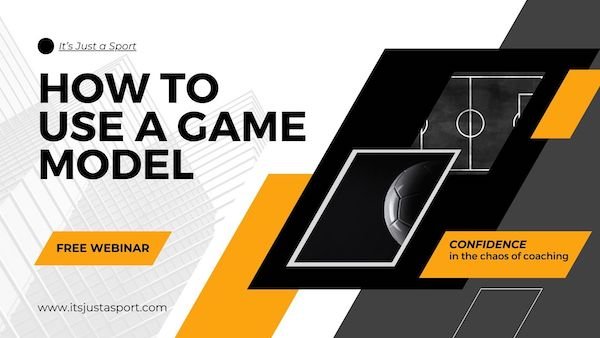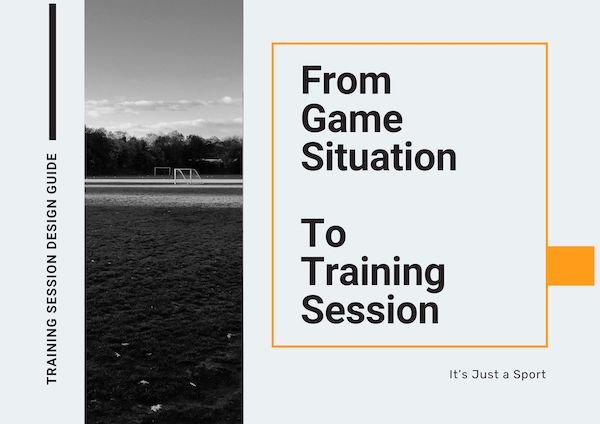The Language of Football
“Thinking quickly is more important to me than playing fast. The speed of the brain is more important than pace.”
Picture this: you have travelled alone to a faraway country of your choice. You are out to dinner with a large group of locals. They don’t speak your language, and you don’t speak a word of theirs. What are you feeling? Overwhelmed? Frustrated? Confused? For the duration of the meal you are going to silently sit and unsuccessfully try to make any sense of this foreign language.
When we begin to learn a new language, we follow a certain progression. We participate in one-way communication by simply listening to nonsense sounds until we have deciphered what certain sounds mean. Slowly using this process we acquire more and more vocabulary until we can engage in two-way communication. This is how we master a language.
If you had that same foreign dinner every night, eventually you would start to decipher sounds. For example, you would notice what people say when they greet each other. Once you knew that, you’d notice the patterns of speech and what sounds came after greetings and what sound the people made when they picked up a piece of bread and so on and so on until you eventually you had a good command of the language.
This is made possible because our brain is hardwired to identify patterns through our perception. Using our senses, we pick up on cues which help us create mind maps of patterns to better understand the world. Football isn’t any different. Every time a footballer steps on the pitch, they are learning the language of football. They are finding patterns by perceiving visual and auditory cues. Just like at the foreign dinner, the footballer is immersed in a chaotic situation full of visual and auditory cues which he or she must decipher and begin to recognize patterns to gradually become fluent in the language of football.
Visual Cues: The Vocabulary of the Game
Just as languages have auditory cues which we decipher, the language of football has visual cues which we must decode. For example, the ball possessor must perceive the ball, the defenders, their teammates, the space where they find themselves, possibly the weather, and any number of other variables which the game will provide. We can identify variables, or visual cues, within any phase of the game. The most intelligent players in the world are able to perceive unbelievable amounts of variables, and by recalling past experiences and utilizing learned patterns about the game, they are able to quickly decide on the best solution to their current scenario.
Building Fluency: From Simple Patterns to Complex Perception
Let’s approach coaching like teaching a language. Yes, when learning a language it is necessary to pronounce a word correctly, just as it is important to accurately execute a pass or a shot. However, isn’t understanding when and where to say the word just as important? Isn’t understanding when and where to execute a pass essential? A language learner needs to understand auditory cues to identify speech patterns. A footballer needs to learn how to perceive visual cues to create a mental database of game patterns. We need to develop our players’ perceptive skills in order to create intelligent, football-fluent players.
Take a young player new to the sport. Put them in a 4v1 rondo. Within this scenario the player only has to perceive one variable, the defender, whose movements are unknown to the player. As long as the player is given the correct amount of time and space in accordance with his or her technical abilities, the player will most likely be able to execute the necessary passes to maintain this activity. After having done this exercise countless times, the player would be highly efficient in being aware of the current variables and will start to identify patterns in the defender’s movements. Having assimilated these patterns, we have developed a player who is capable of perceiving a certain number of variables. Through this learning process, we create players who are confident in certain situations, thus developing them holistically.
However, we obviously can’t stop at 4v1 situations and it’s the job of the teacher to create the adequate progression for the learner to effectively be able to perceive more information. For example, a natural progression from the 4v1 situation is to create 4v2 situations. To do this we can use the same rondo exercise but add another defender. In this situation, the perceptual complexity of the exercise is exponentially more difficult due to the fact that now they have to perceive two variables which are out of their control.
When players are first faced with an exercise of this complexity, they will struggle. They will make mistakes as a result of perceptual blindness. It is important to make the distinction between this and technical mistakes. Correctly identifying perceptual blindness means we can help players to see what they failed to perceive and why that led to giving up possession. By doing so, players will naturally begin to identify perceptual errors and, consequently, improve their perception during the entirety of the activity. With enough consistency and repetition, players will develop perceptive habits which will help them to become more intelligent players.
Coaching for Understanding: Developing Self-REGULATING Players
This is part of a holistic player development approach. Of course, we teach how to correctly pronounce words or execute skills, but we also teach the context in which to use them. By providing them with repeated situations, like the pleasant greetings at the dinner party, or 4v1 situations, we let them use their innate skill of pattern recognition to ultimately grasp a new language. That being said, we can’t begin to teach the language of football without ourselves comprehending each and every situation of a match and the cues necessary to perceive in order to be successful in said situations. So let’s question the root of mistakes; are those technical faults your team struggle with actually perceptual blindness? In utilizing this holistic approach to learning we can develop players who are capable of educating themselves. Let’s prepare players who can fluently converse in the language of football.
“A successful person isn’t necessarily better than her less successful peers at solving problems; her pattern-recognition facilities have just learned what problems are worth solving.”



